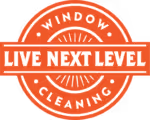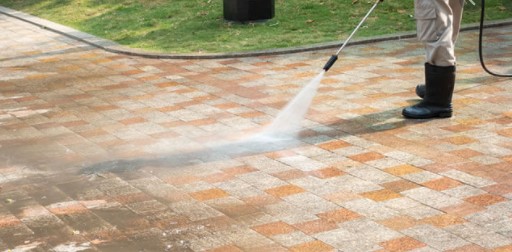Pressure washing is a process which involves the use of high pressure water streams to effectively remove dirt, dust, and other debris from surfaces. Commercial pressure washing is a specialized form of cleaning which requires knowledge and skill in order to achieve the desired results. This article will provide an overview on mastering the art of commercial pressure washing, including topics such as understanding the right pressure, choosing appropriate detergents, safety measures, techniques for pressure washing, and benefits associated with this type of cleaning. With the correct tools and procedures in place, commercial pressure washing can be an effective method for removing unwanted substances from a variety of surfaces.
In order to properly master commercial pressure washing it is important to understand how to select the right amount of pressure for each job. Different types of materials require different levels of power; too much pressure can cause damage while too little may not produce satisfactory results.
Furthermore, it is essential to choose detergents that are safe for both people and property when using this technique since some chemicals can be dangerous or corrosive. Additionally, safety measures should always be taken including protecting oneself by wearing protective clothing such as gloves and goggles as well as observing any local ordinances regarding wastewater runoff.
Finally, knowledge on different techniques used for successful commercial pressure washing must also be acquired through trial and error or hands-on experience with these methods. By implementing these steps one can begin to master the art of commercial pressure washing while reaping its many benefits including improved efficiency during cleaning tasks as well as enhanced aesthetics when compared with traditional methods such as hand scrubbing or wiping down surfaces.
Understand the Right Pressure
Selecting the appropriate pressure level is essential to achieving successful results in commercial pressure washing.
The process of choosing the right pressure level begins with selecting the correct nozzle size, as this will determine what kind of spray pattern and power is produced by the washer.
To select the proper nozzle size for a particular job, it is important to consider factors such as distance from the surface being washed, material composition of the surface, and desired cleaning results.
Once a suitable nozzle has been selected, it’s time to choose an appropriate pressure level for that particular job.
Pressure levels should be set according to cleaning needs; if too much water pressure is used on a delicate surface, there may be damage done to it.
Too little water pressure can lead to inadequate cleaning results or missed areas.
It is important to use water pressure cautiously when working on delicate surfaces such as wood or stone surfaces that are easily damaged by high-pressure water streams.
Additionally, using lower pressures can help conserve water while still achieving satisfactory cleaning results.
Taking all these considerations into account will help ensure that commercial pressure washing jobs are completed efficiently and safely with excellent results each time.
Choose the Right Detergents
Research has shown that up to 95% of detergents used in commercial pressure washing are safe and effective for their intended purposes. It is important to understand the type of detergent being used, as well as the proper storage conditions to ensure a successful outcome. Proper selection and storage of chemicals is one of the keys to mastering the art of commercial pressure washing.
| Detergent | Storage Conditions | Benefits |
|———–|——————–|———|
| Alkaline-based | Keep sealed when not in use <br/> Store in cool, dry place <br/> Do not store near food or water sources | Removes dirt, grease & oils effectively<br/> Non-corrosive<br/> Biodegradable & non-toxic |
| Acidic-based | Keep sealed when not in use <br/> Store away from direct sunlight <br/> Do not store near food or water sources | Ideal for removing scale & rust<br/> Low toxicity levels<br/> Easily rinse off surfaces |
| Neutral | Keep sealed when not in use <br/> Store away from moisture/humidity <br /> Do not store near food or water sources | Multi-purpose cleaning agent<br /> Safe on all surfaces<br /> Environmentally friendly ||
When selecting a detergent for commercial pressure washing, it is important to keep safety considerations top of mind. The right combination of detergents can help achieve desired results while also providing safety benefits such as reduced toxicity levels and biodegradability. With this knowledge base, you can confidently make an informed decision on which product will best suit your needs.
Safety Measures
Adopting safety measures is essential for achieving desired results while ensuring the wellbeing of workers and the environment.
Working with pressure washing equipment requires wearing protective gear such as protective gloves, boots, and glasses to guard against hazardous chemicals or flying debris.
Additionally, workers should remain aware of their surroundings at all times to avoid potential hazards that can come from working on elevated surfaces.
For example, when working off ladders it is important to ensure the ladder is securely positioned on flat ground and locked in place before any work begins. Likewise, having a spotter nearby can help prevent falls or injuries due to overreaching or overexertion.
Finally, it’s also important to follow manufacturer guidelines for using pressure washers safely and correctly. This includes reading instructions carefully before use and avoiding certain materials like brick or stone that could be damaged by high-pressure water jets.
Taking the necessary safety steps ensures an efficient job while protecting both personnel and property from potential harm.
Techniques for Pressure Washing
Utilizing the right techniques when pressure washing is critical for achieving optimal results. Pressure washing requires skill and precision to prevent surface damage. To protect surfaces while using a pressure washer, start by pre-treating the areas with a detergent solution that is appropriate for the job:
- Utilize a low PSI setting or nozzle to apply the cleaning solution, allowing it to sit on the surface for at least 3 minutes before rinsing.
- Set your pressure washer’s PSI level slightly higher than what you used while applying cleaning solution and use an appropriate nozzle size based on recommendations from your machine’s manufacturer.
- Start from the top of your work area and spray downward in overlapping patterns as you move across each section of the surface, ensuring complete coverage with each pass.
- Rinse thoroughly with clear water until all suds are gone to ensure that no residue remains behind after pressure washing is completed.
Using these tips helps ensure that surfaces are not only effectively cleaned but also protected from potential damage caused by excessive water pressure or improper rinsing techniques during the process of pressure washing.
With care and proper technique, one can achieve great results with minimal effort when utilizing a pressure washer properly!
Benefits of Pressure Washing
Exploring the various benefits of pressure washing can provide an array of advantages to both residential and industrial spaces. Pressure washing is a cost-effective way to maintain, rejuvenate, and improve the appearance of surfaces on both residential and commercial properties. Not only does it save time, but pressure washing also offers notable advantages in terms of water conservation when compared to other traditional cleaning methods.
| Advantages | Residential Properties | Industrial Properties |
|—|—|—|
| Cost-effectiveness | Pressure washing helps reduce labor costs associated with cleaning services as well as materials used for upkeep. | Pressure washing helps reduce labor costs associated with cleaning services as well as materials used for upkeep. Additionally, it can help extend the life of surfaces such as metal railings or steel siding which may require special treatments otherwise. |
| Time Savings | Pressure washing decreases the time needed for cleaning projects due to its higher power output than manual scrubbing or brooming. This makes it an ideal choice for larger scale jobs where efficiency is key. | By utilizing high powered jets that can quickly clean large areas in a fraction of the time it would take manual scrubbing or brooming, pressure washing reduces downtime associated with maintenance tasks while still providing excellent results. |
| Water Conservation | Compared to traditional methods such as bucket rinsing and mopping, pressure washing uses significantly less water to achieve effective surface cleansing results. This makes it beneficial for outdoor applications where large amounts of water must be conserved due to local drought conditions or seasonal restrictions on usage. ||
The use of specialized tools such as detergents and hot water further enhances efficiency while helping remove built up dirt, grime, mold, mildew and other deposits from many surfaces including driveways, patios decks and more without excessive water usage – making pressure washers an eco-friendly option that provides long lasting results with minimal effort required from users. In addition to these advantages mentioned above ,pressure washers have been proven effective at removing graffiti from walls in public areas which helps maintain a pleasant atmosphere within communities even during times when vandalism has become more prevalent.
Conclusion
The art of pressure washing is a skill that can produce impressive results. Properly executed, it can restore surfaces to pristine condition and leave them looking as good as new.
To master this craft, one must understand the appropriate pressure setting for each job they undertake, choose the best cleaning detergents for the task at hand, and take all necessary safety precautions.
With experience, practitioners will become adept at utilizing various techniques to achieve optimal outcomes in their work.
When done right, pressure washing offers numerous advantages. It relies on effective cleaning agents to remove dirt and debris from even the most difficult-to-reach areas and is an efficient way to restore surfaces without the use of harsh chemicals or other dangerous tools.
Moreover, when expertly applied with precision and knowledge, it yields beautiful results that last for years. The key is mastering this art form by understanding its fundamentals and applying them properly.




